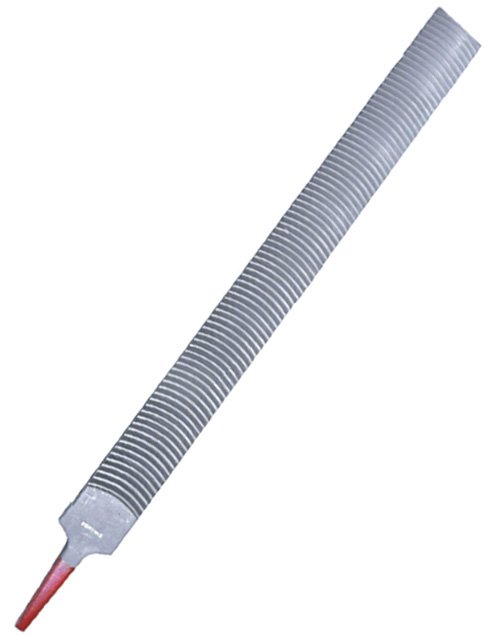Here's a little how to for those of you wanting to take the dings out of fenders, chain guards, tanks, etc.
Im sure there are many ways to accomplish the same task, but this is a method I use that requires no filler, a good automotive primer surfacer and a couple blocking sessions and you are good to go.
This is as close to dead nuts straight as I can get it without using a fender roller. Tools required... your favorite body hammer, bench vise (used as an anvil) misc. dollys, Vixen file, and a rubber block with 80g.
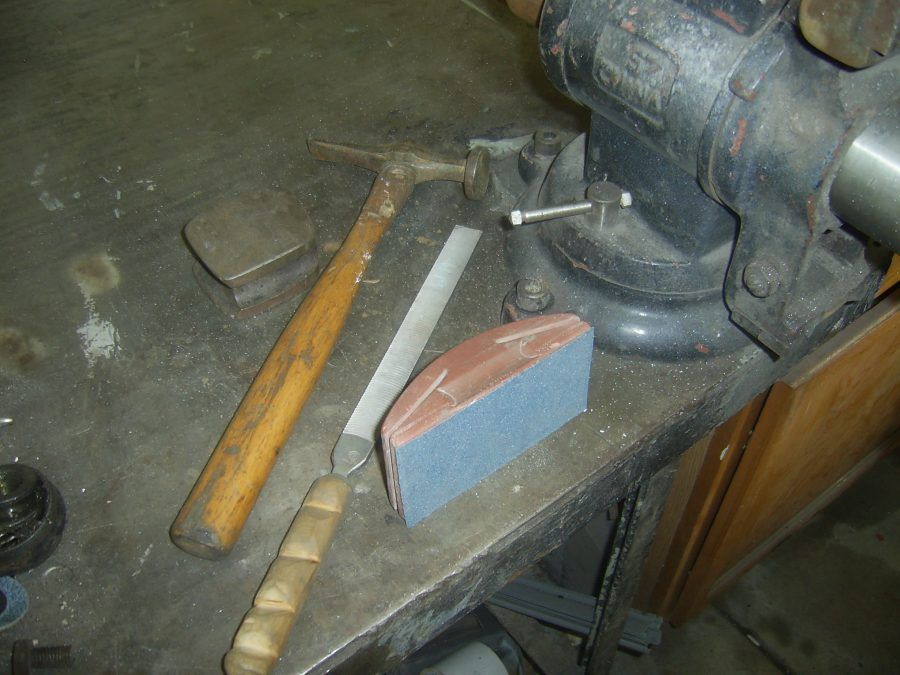
Not the easiest thing to see, but here is the ding...
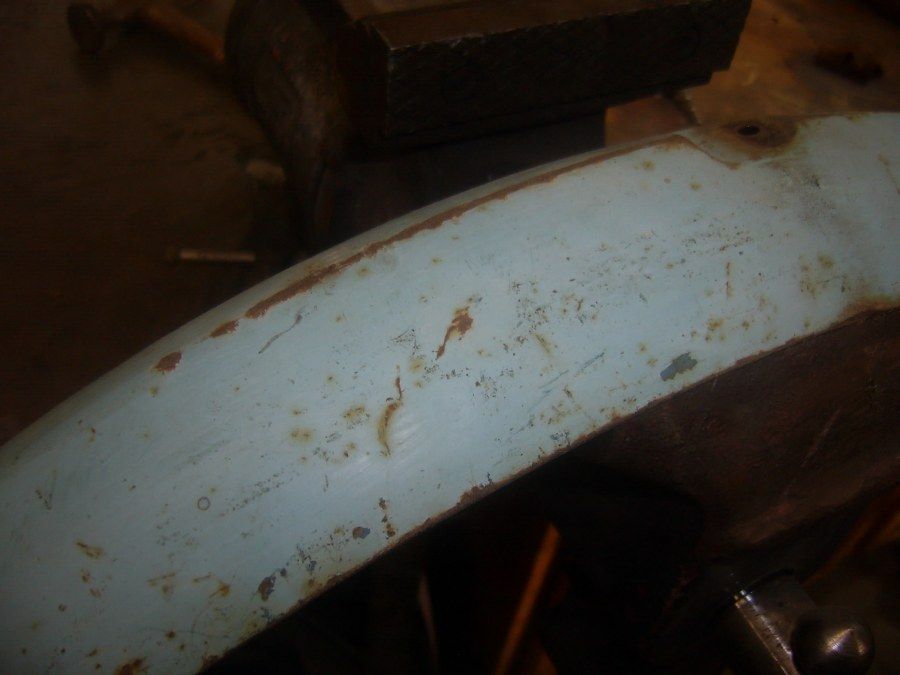
After a quick pass with the vixen file, the ding shows up much better
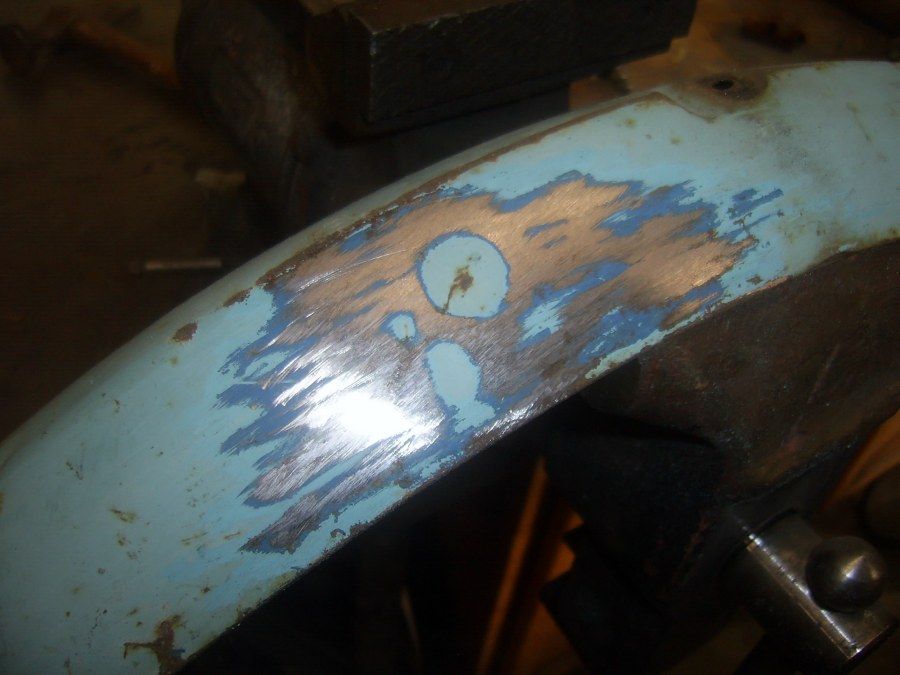
So at this point, you can see the high spots (bare metal) and the low spots (still have paint in them) what we need to do is to bump the low spots up, I do this by tapping the ding from the backside using the bench vise as my dolly. I prefer a hard backing because if you use a shot bag you stand a good chance of stretching the metal too far so that it becomes a high spot. By bringing the ding up slowly it gives me greater control so I dont over stretch it, which is one thing you definetly dont want to do.
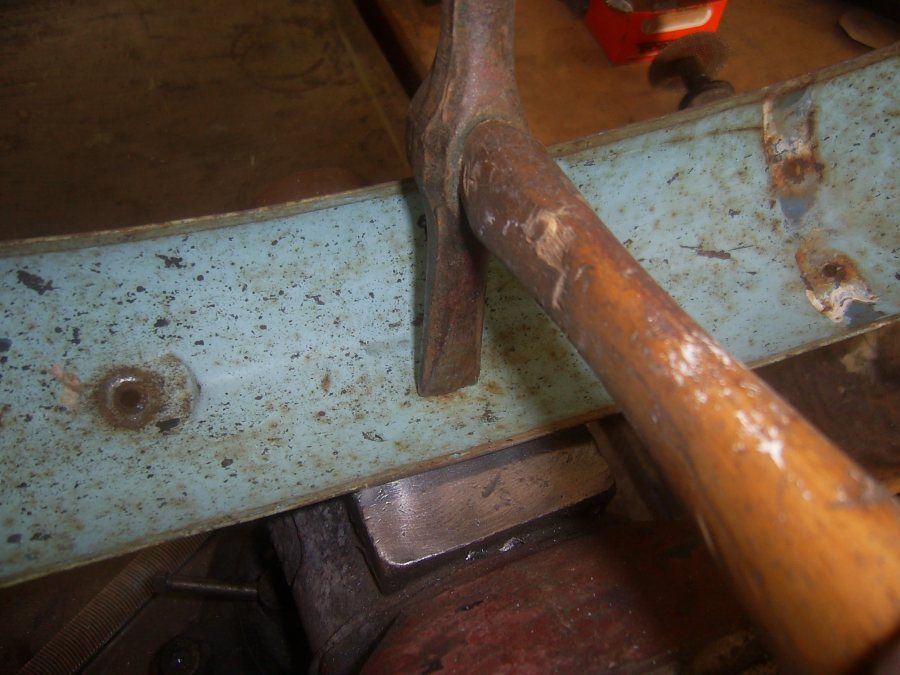
Go slow, tap tap tap, then hit it with the file again. I like using the vixen file because it leaves a nice shiny surface and does not remove much metal at all. You dont want to use a regular file with this method because it will remove too much metal and you will end up with a paper thin fender when your done.
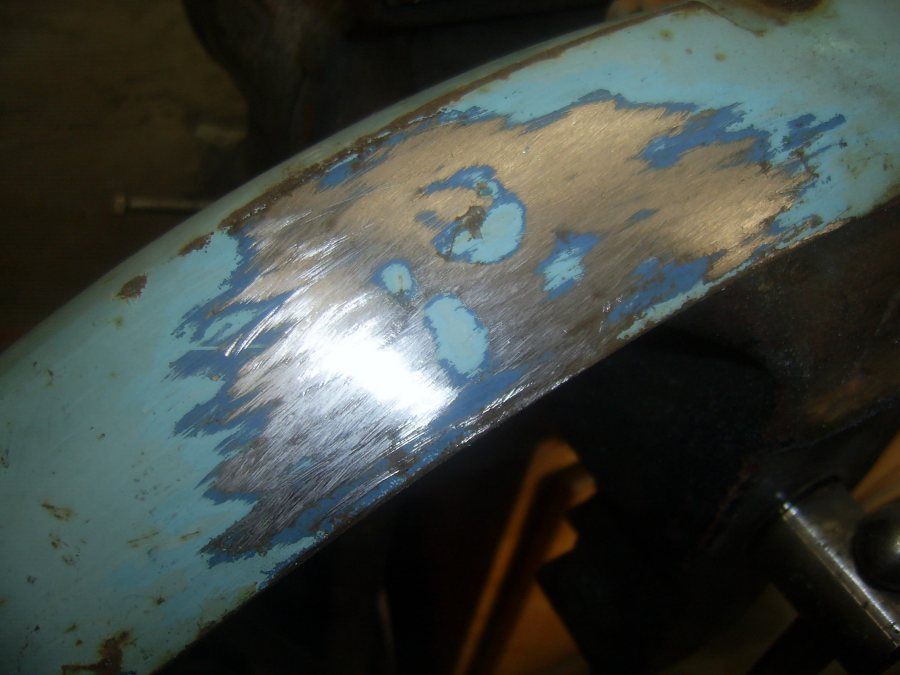
Keep bumping the low spots up, then file to see where your at.... pick and file, pick and file, kinda tedious, but this is where the process pays off. as you can see the low spot keeps getting smaller...
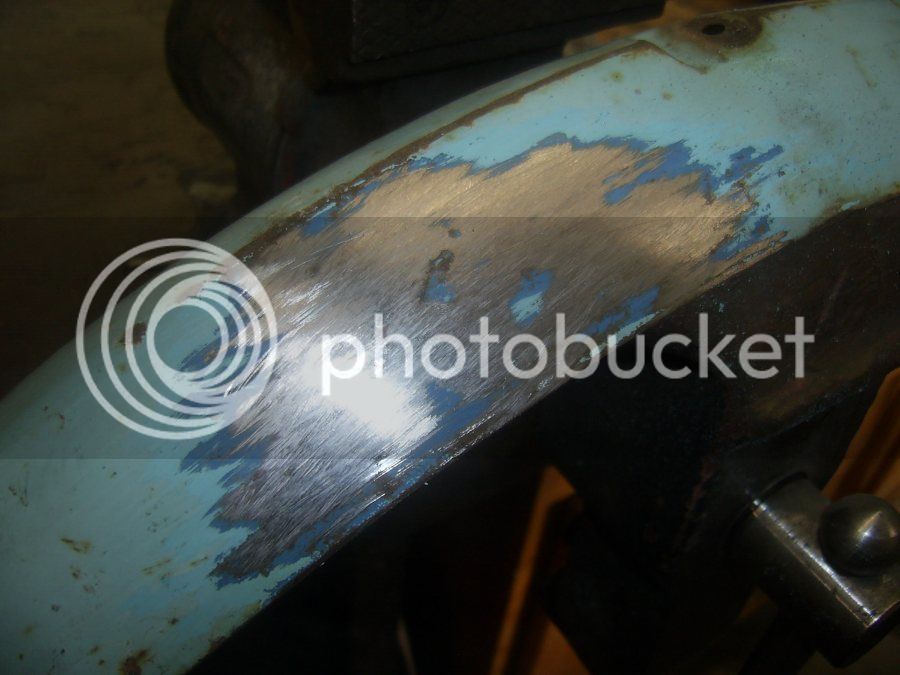
Keep at it to the point where the ding is completely gone...
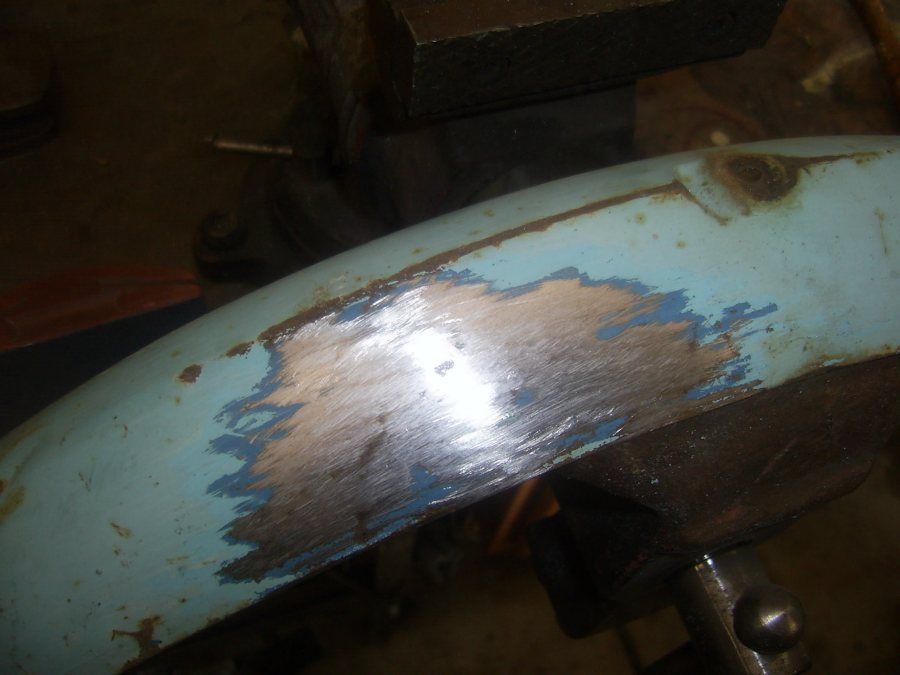
And finally, finish it off with the rubber block with 80 grit...
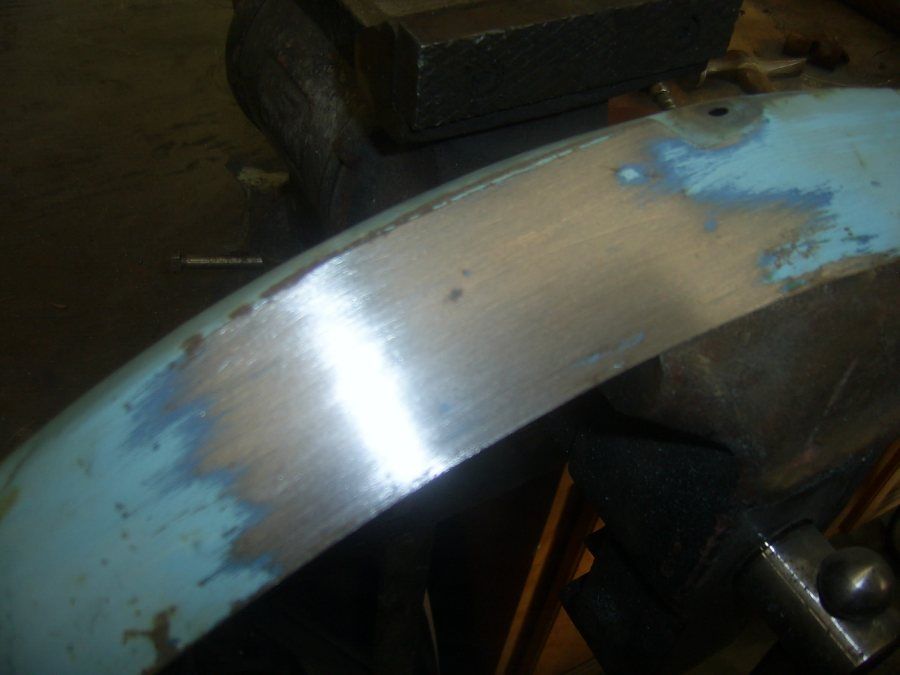
Keep in mind if you over stretch the metal and it becomes a high spot, then you will have to dolly the metal back down, and if its stretched too far, it may not come back into shape without some serious shrinking help. You want to avoid over stretching the metal at all costs, it can take a 30 minute job and turn it into an eight hour ordeal. Good luck, have fun and go slow with it!
Im sure there are many ways to accomplish the same task, but this is a method I use that requires no filler, a good automotive primer surfacer and a couple blocking sessions and you are good to go.
This is as close to dead nuts straight as I can get it without using a fender roller. Tools required... your favorite body hammer, bench vise (used as an anvil) misc. dollys, Vixen file, and a rubber block with 80g.

Not the easiest thing to see, but here is the ding...

After a quick pass with the vixen file, the ding shows up much better

So at this point, you can see the high spots (bare metal) and the low spots (still have paint in them) what we need to do is to bump the low spots up, I do this by tapping the ding from the backside using the bench vise as my dolly. I prefer a hard backing because if you use a shot bag you stand a good chance of stretching the metal too far so that it becomes a high spot. By bringing the ding up slowly it gives me greater control so I dont over stretch it, which is one thing you definetly dont want to do.

Go slow, tap tap tap, then hit it with the file again. I like using the vixen file because it leaves a nice shiny surface and does not remove much metal at all. You dont want to use a regular file with this method because it will remove too much metal and you will end up with a paper thin fender when your done.

Keep bumping the low spots up, then file to see where your at.... pick and file, pick and file, kinda tedious, but this is where the process pays off. as you can see the low spot keeps getting smaller...

Keep at it to the point where the ding is completely gone...

And finally, finish it off with the rubber block with 80 grit...

Keep in mind if you over stretch the metal and it becomes a high spot, then you will have to dolly the metal back down, and if its stretched too far, it may not come back into shape without some serious shrinking help. You want to avoid over stretching the metal at all costs, it can take a 30 minute job and turn it into an eight hour ordeal. Good luck, have fun and go slow with it!































































